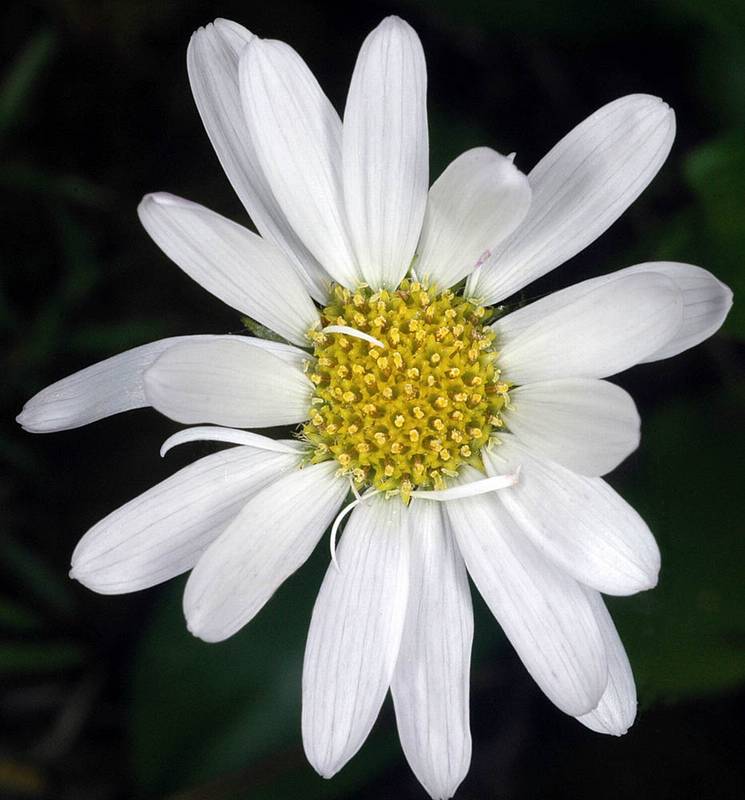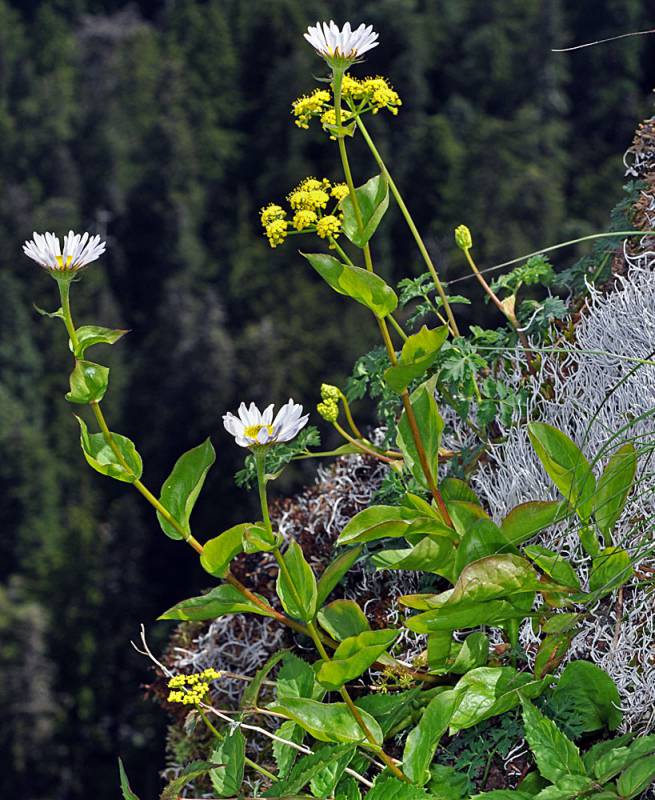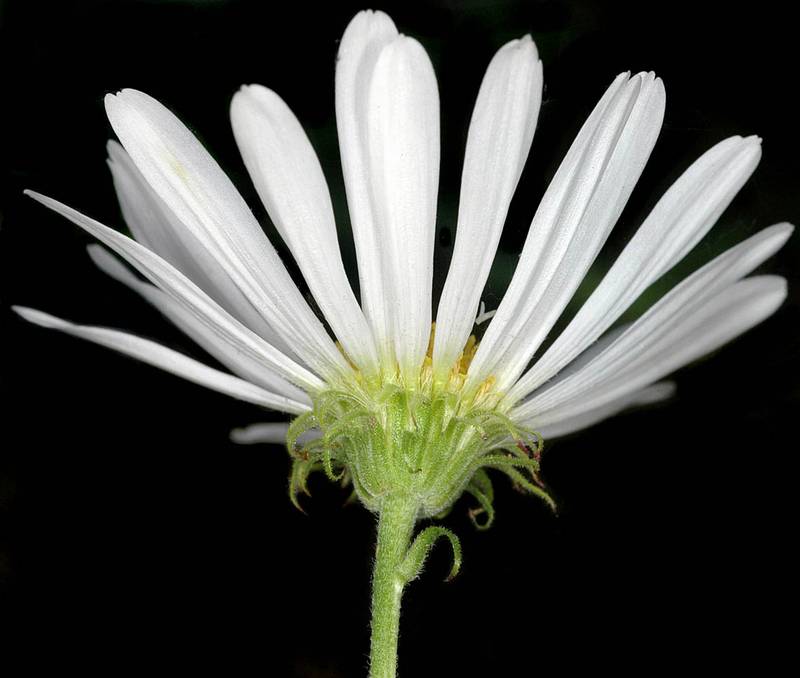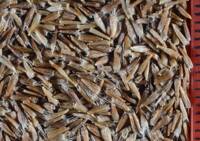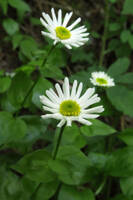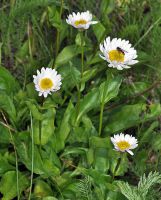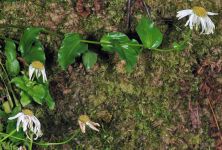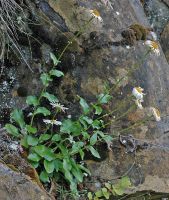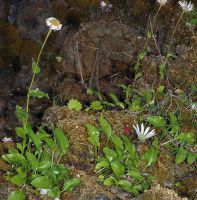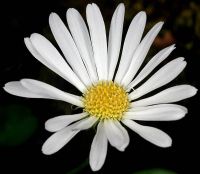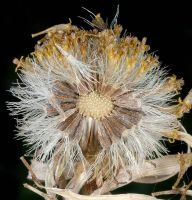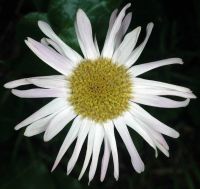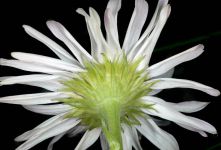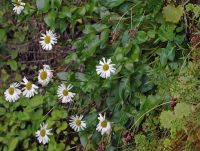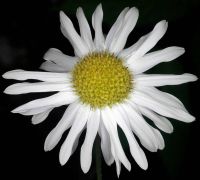Distribution: Known only from Skamania County in Washington; Skamania County, WA to Clackamas and Multnomah counties in Oregon.
Habitat: Moist, rocky places in the lowlands.
Flowers: April-June
Origin: Native
Growth Duration: Perennial
Conservation Status: Threatened in Washington (WANHP)
Pollination: Bees, butterflies, flies, apomixis?
Rhizomatous perennial, the stems 2-5 dm. tall, with a few woolly hairs under the heads.
Leaves alternate, thin, glabrous, the lower ones with an ellipitical blade 2-8 cm. long and 1.5-4.5 cm. wide, abruptly contracted to the 2-12 cm. petiole; middle cauline leaves ovate to cordate, strongly clasping at the base; upper leaves similar but smaller.
Heads solitary; disk 12-20 mm. wide; involucre bracts loose, equal, glandular, somewhat herbaceous; rays 30-50, white, 13-25 mm. long and 2-4 mm. wide; disk corollas yellow, 4-5 mm. long, the lobes flaring; pappus simple, of 20-30 capillary bristles.
Achenes asymmetrically 5-nerved.
Publication: Syn. Fl. N. Amer. 1(2): 209. 1884.
PNW Herbaria: Specimen records of Erigeron howellii in the Consortium of Pacific Northwest Herbaria database
WA Flora Checklist: Erigeron howellii checklist entry
OregonFlora: Erigeron howellii information
E-Flora BC: Erigeron howellii atlas page
CalPhotos: Erigeron howellii photos

